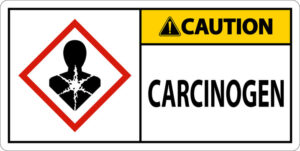November
Safety News

Hunting Season Is Open

15 Point – Youth Hunt – Cole, 14 years old – WMA Gillham, Arkansas
Here are some safety tips to follow when hunting:

- Wear hunter orange when in the woods. Use hunter orange to identify your hunting location.
- Dress defensively. Never wear red, white, blue or black while hunting turkey.
- Know the effective range of your gun.
- Always identify your target before putting your finger on the trigger.
- Never shoot at sound or movement. Assume it is another hunter until you can clearly see the animal.
- Stay aware of other hunters.
- Be sure of your target and what lies beyond it.
- Make sure your equipment is in good working condition and your firearm is properly sighted in.
- If you hunt on private land, know where the boundaries, houses, roads, fences and livestock are located on the property.
- Report observed violations of the law to a conservation agent or local sheriff.
- Know and obey all wildlife laws and gun safety.
- When using a camouflage blind, other hunters cannot see you even if you are wearing hunter orange. Tie hunter orange on each side of the blind so it can be seen from all sides.
- If you are an inexperienced hunter, seek out experienced hunters that you can learn from.
- If you are involved in a firearms-related hunting incident, identify yourself and render assistance. Failure to do so is a Class A misdemeanor.


Carcinogens Found in the Workplace
With Pancreatic Cancer Awareness Month in November, carcinogens are a safety topic that should be frequently discussed. Unfortunately, around 1,806,600 new cases of cancer are diagnosed in the US each year.
Occupational cancer is all-too-common and jobs such as fire-fighting, mining, or as a night shift worker can leave your colleagues more vulnerable. To prevent this, you & your co-workers should learn to identify sources of carcinogens in the workplace as well as safe exposure levels. Also, getting familiar with the appropriate PPE (personal protective equipment) for exposure to each material is a good idea.
The ten most common workplace carcinogens are:
- Asbestos
- Benzene
- Cadmium
- Chromium
- Crystalline silica
- Formaldehyde
- Ionizing radiation
- Lead
- Nickel
- Wood dust
Diabetes & Work Performance
 November is a big month for diabetes-related events and awareness days. With Diabetes Awareness Month, American Diabetes Month, Diabetes-Related Eye Disease Month, and World Diabetes Day, it’s the ideal time to talk about diabetes and increase awareness of this disease.
November is a big month for diabetes-related events and awareness days. With Diabetes Awareness Month, American Diabetes Month, Diabetes-Related Eye Disease Month, and World Diabetes Day, it’s the ideal time to talk about diabetes and increase awareness of this disease.
Over 10% of the US population has diabetes, making it highly likely that someone in your workplace is affected by it. Besides getting your colleagues up-to-date with the symptoms of diabetes and what to look out for, it’s worth examining how to live a healthy lifestyle to eliminate the risk of contracting Type 2 diabetes.
Should diabetes be an occupational concern?
Diabetes is not an occupational hazard or concern. However, if a co-worker does have it, they will need access to insulin and a first-aid plan in case of any issues. They may need to make reasonable adjustments to the working environment.
Holiday Workplace Safety

With the Thanksgiving holiday around the corner, safety chats are important to maintain. There is plenty of safety topics to cover around Thanksgiving and in the lead-up to Christmas. These can include:
- Personal hygiene, infection, and health (due to the cold temperatures and higher risk of spreading disease)
- Fatigue and exhaustion
- Exposure to cold temperatures
- Cold weather working conditions and patterns
- Winter weather and snow, including vehicle safety and ladder safety regulations
The holiday season can also bring other safety issues like increases in alcohol and drug consumption. Blackout Wednesday (the evening before Thanksgiving) is also referred to as “Drinks-giving” and the date where national alcohol and binge drinking is at an all-time high. Because of this, drunk driving accidents are more likely to occur over the holiday period. Fatigue, hangovers, and coming into work intoxicated can cause preventable injuries and accidents. So, it’s important to remind co-workers that it’s important to come to work sober.
